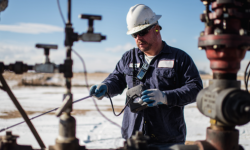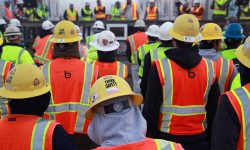WorkSafe ACT Commissioner Greg Jones would not be human if he said he wasn't feeling frustrated at the spike in serious safety incidents in the Territory's construction industry in recent weeks.
In 2012, an ACT government-commissioned report revealed the Territory had the worst construction site safety record in Australia, with a rate of serious injury almost double the national average. It also had the highest proportion of workplace deaths per head of population.
The Gallagher government responded by increasing WorkSafe ACT's funding to enable more frequent inspections of construction sites, and promising to pursue negligent employers and contactors through the courts with greater timeliness and energy. In spite of these and other commitments, however, there have been three serious construction-site accidents since October – two of which could easily have proved fatal.
In situations like this, where the regulators' best efforts have apparently proved in vain, a natural inclination is to look for scapegoats and to double down on efforts to police construction sites and punish miscreants. And it may be that investigations into these accidents reveal lapses in supervision or site indoctrination requiring disciplinary action, although it's too early to know if this is the case.
It might also be the case that these accidents were unavoidable – or could have been avoided only with a safety regimen so involved and costly that no construction firm or contractor could justify it.
It's an sombre fact of life that electric saws, nail guns, concrete pumps and other tools of the building trade are inherently dangerous, and that there are additional risks on multi-storey construction sites like jagged rebar, empty lift shafts, and unprotected wall openings. A moment's carelessness around such hazards is all it takes to trigger a mishap.
One of this week's accidents involved a contractor using a hydrovac to remove soil to locate underground gas lines and electricity and telco cables. Though such services are routinely marked on maps, accurately avoiding them can be difficult, especially when large machinery is being used nearby. In this case, the hydrovac operator received a nasty electric shock.
Time spent working with power tools on buildings sites generally confers a greater awareness or appreciation of the risks present. Or to put it another way, newcomers are more likely to be injured than old hands. That apprentices were involved in two of the three accidents suggest more emphasis may be needed on site induction and the supervision of younger workers.
Governments, safety regulators and employers need to take all sensible and appropriate steps to ensure employees make it home to their families after each day's work – and to be especially vigilant when it comes to construction activity. But because inspectors and overseers can't be everywhere at once, employees need to be reminded to take their own welfare seriously, too.
Educating construction workers to that end, whether at TAFE or on the job, is as critical as a well-resourced WorkSafe ACT to improving the ACT's health and safety record.
Workers must help manage safety too. Available from <http://www.canberratimes.com.au/comment/ct-editorial/workers-must-help-manage-safety-too-20161208-gt7cat.html> [December 9 2016]









